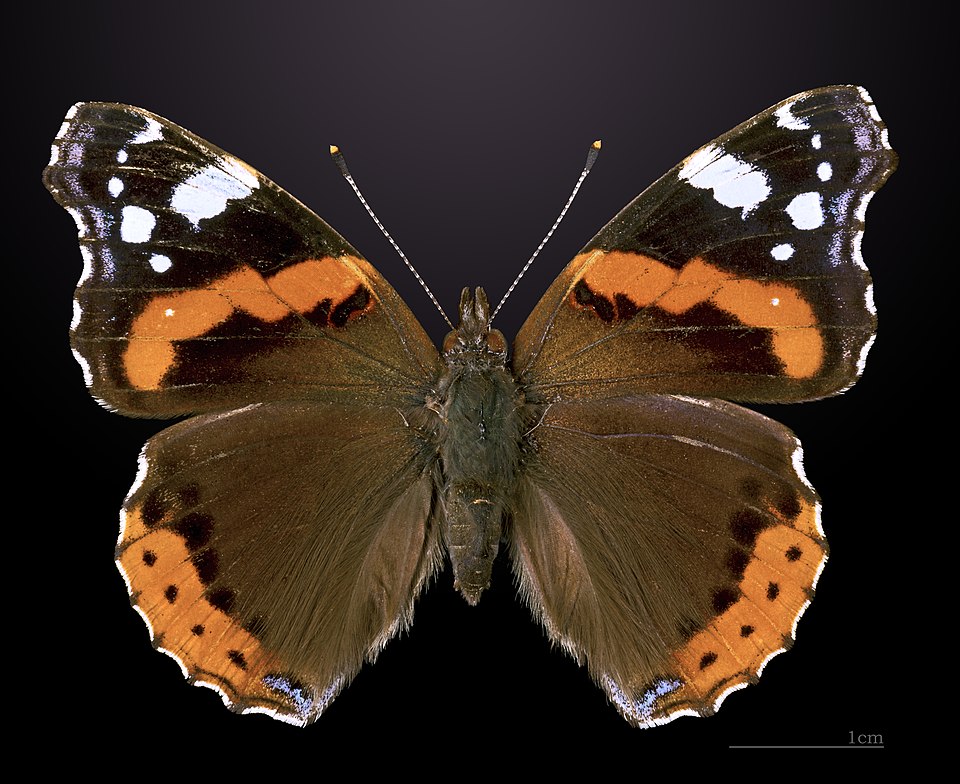
Vanessa atalanta (Red Admiral)
The Vanessa atalanta, commonly known as the Red Admiral, is a widespread and easily recognizable butterfly found in Europe, North America, and parts of Asia. Known for its striking appearance, this butterfly is a member of the family Nymphalidae and is characterized by its vibrant red, black, and white wing patterns.
Description
The Red Admiral has distinctive wings with a combination of dark black and brown tones, accented by bright orange-red bands and white spots. The wingspan ranges from 5.5 to 6 cm (2.2 to 2.4 inches), and the underside of the wings is a muted brown with orange and white patterns that help camouflage the butterfly when it is resting. The adult butterflies are known for their swift and erratic flight, often seen darting around flowers or basking in the sun.
Habitat and Distribution
Vanessa atalanta is found in a wide range of habitats, from gardens and woodlands to coastal areas and urban spaces. This butterfly species is native to Europe, Asia, and North America. In the colder regions, Red Admirals are migratory, with populations moving southward during the colder months to warmer climates in Europe and North Africa. In warmer regions, they are often found year-round.
Behavior and Life Cycle
The Red Admiral’s behavior is very active, particularly in spring and summer. They are known for their migratory behavior, moving from one area to another as the seasons change. The life cycle of Vanessa atalanta includes four stages: egg, larva (caterpillar), pupa (chrysalis), and adult butterfly. The caterpillars feed on a variety of plants, particularly nettles, and the pupation occurs on the ground or on plant stems.
Diet and Feeding Habits
Adult Red Admirals primarily feed on nectar from a variety of flowering plants, including those from the Asteraceae family, such as daisies and thistles. The caterpillars, on the other hand, feed mainly on nettles, which provide the necessary nutrients for their development. The butterfly is also known to take advantage of rotting fruit and sap from trees.
Conservation Status
Vanessa atalanta is not currently considered endangered and is quite common in many parts of its range. However, like many butterfly species, it faces threats from habitat destruction and climate change. Conservation efforts focus on maintaining natural habitats and protecting nettle plants, which are crucial for the caterpillars’ survival.
